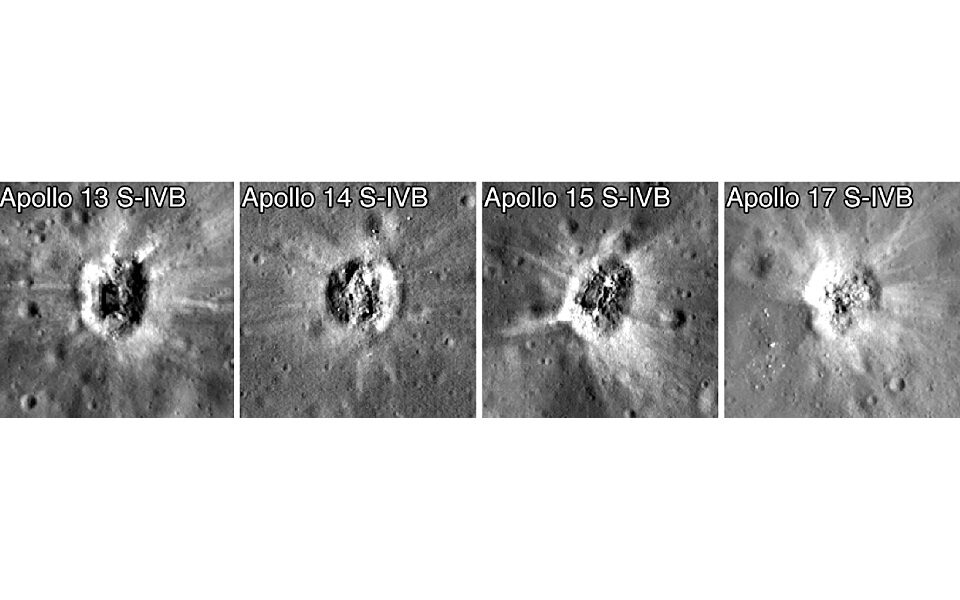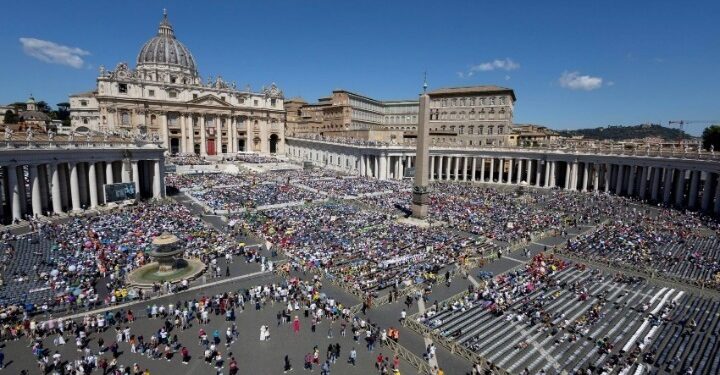“They found two new craters on the moon and discovered a new mystery…”

After months of scrutinizing photographs of the lunar surface, scientists have finally found the crash site of a forgotten rocket stage that struck the far side of the moon in March.
They still do not know for sure which rocket the wayward debris originated from. And they are perplexed about why the impact excavated two craters and not just one.
“It’s cool, because it’s an unexpected outcome,” said Mark Robinson, a professor of geological sciences at Arizona State University who serves as the principal investigator for the camera aboard NASA’s Lunar Reconnaissance Orbiter, which has been photographing the moon since 2009. “That’s always way more fun than if the prediction of the crater, its depth and diameter, had been exactly right.”
Robinson reported the discovery Friday on the website that stores images taken by the lunar orbiter.
The rocket crash intrigue started in January when Bill Gray, developer of Project Pluto, a suite of astronomical software used in calculating the orbits of asteroids and comets, tracked what looked like the discarded upper stage of a rocket. He realized it was on a collision course with the far side of the moon.
The crash was certain, at about 7:25 a.m. Eastern time on March 4. But the exact orbit of the object was not known, so there was some uncertainty about the time and place of the impact.
Gray said the rocket part was the second stage of a SpaceX Falcon 9 that launched the Deep Space Climate Observatory, or DSCOVR, for the National Oceanic and Atmospheric Administration in February 2015.
He was wrong.
A NASA engineer pointed out that the launch trajectory of DSCOVR was incompatible with the orbit of the object Gray was tracking. After some more digging, Gray concluded that the most likely candidate was a Long March 3C rocket that was launched from China a few months earlier, on Oct. 23, 2014.
Students at the University of Arizona reported that an analysis of the light reflected from the object found that the mix of wavelengths matched similar Chinese rockets rather than a Falcon 9.
But a Chinese official denied it was part of a Chinese rocket, saying that the rocket stage from that mission, which launched the Chang’e-5 T1 spacecraft, had reentered Earth’s atmosphere and burned up.
Regardless of what rocket it was part of, the object continued to follow the spiraling path dictated by gravity. At the predicted time, it slammed into the far side of the moon within the 350-mile-wide Hertzsprung Crater, out of sight of anyone on Earth.
The Lunar Reconnaissance Orbiter was not in a position to watch the impact, but the hope was that a freshly carved crater would show up in a photograph that the spacecraft took later.
Gray’s software made one prediction of the impact site. Experts at NASA’s Jet Propulsion Laboratory calculated a location a few miles to the east, while members of the Massachusetts Institute of Technology’s Lincoln Laboratory expected that the crash would occur tens of miles to the west.
That meant the researchers had to search a swath about 50 miles long for a crater a few tens of feet wide, comparing the lunar landscape before and after the crash to identify recent disturbances.
Robinson said he worried that “it was going to take us a year of imaging to fill in the box.”
While the Lunar Reconnaissance Orbiter has photographed the vast majority of the moon several times over the past 13 years, there are spots it has missed. It turned out that some of the gaps were near the expected crash site.
Robinson remembered thinking of Murphy’s Law and joking, “I know exactly where it’s going to hit.”
Because the crash was predicted a month ahead of time, the mission team was able to fill in most of the gaps.
Then the search started.
Usually, a computer program does the comparison, but that works best if the before-and-after pictures are taken at the same time of day. For this search, many of the images were taken at different times, and the difference in shadows confused the algorithm.
With all the false positives, “we just sat down and had several people manually going through the millions of pixels,” Robinson said.
Alexander Sonke, a senior in Arizona State’s geological sciences department, contributed to the effort. He estimated that he had spent about 50 hours over several weeks performing the tedious task.
Sonke graduated in May. He got married. He went on his honeymoon. A week and a half ago was his first day back at work — he is about to embark on his graduate school studies with Robinson as his adviser — and he resumed the search for the impact site.
He found it.
Sonke said he had seen “a group of pixels that looked significantly different in brightness” as the before-and-after images blinked back and forth.
“I was pretty confident when I saw it that this was a new geologic feature,” Sonke said. “I certainly jumped out of my seat a little, had a feeling that this was definitely it, and then tried to kind of restrain my excitement.”
The eastern crater, about 20 yards in diameter, is superimposed on the slightly smaller western one, which most likely formed a few thousandths of a second before the eastern one, Robinson said.
This is not the first time a spacecraft part has hit the moon. For example, pieces of the Saturn 5 rockets that took astronauts to the moon in the 1970s also carved craters. But none of those impacts created a double crater.
The reason this one did might point to its mystery identity. The October 2014 Chinese mission carried the Chang’e-5 T1 spacecraft, a precursor for another mission, Chang’e-5, which landed on the moon and brought rock samples back to Earth.
The precursor T1 spacecraft did not include a lander, but Robinson surmises that it had a heavy mass at the top of the stage to simulate the presence of one. If so, then rocket engines at the bottom and the lander simulator at the top could have created the two craters.
“That’s sheer speculation on my part,” Robinson said.
The other parts of the rocket stage would have been thin, light aluminum, not likely to make much of a dent on the lunar surface.
The actual impact site lay between the sites predicted by Gray and the NASA Jet Propulsion Laboratory, close to the NASA one. “It was within the margins of error that we had computed,” Gray said.
It was also fortunate that the Lunar Reconnaissance Orbiter team had filled in the gaps — called gores, in the language of mapmakers — in the images. “As Murphy would have it, that thing impacted in what was one of the gores,” Robinson said. “If I hadn’t been alerted, we wouldn’t have had a before image.”
The scientists might eventually have found the crash site. Dirt tossed out from a gouged crater is usually brighter, growing darker over time. That is how scientists identified the craters caused by Saturn 5 stages.
But they would still be looking for one small bright spot in the haystack of the moon.
Source: The New York Times.





